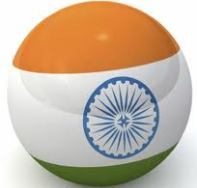The proposed National Policy of Electronics, 2011 envisions creating a globally competitive Electronics Systems and Design Manufacturing (ESDM) industry including nano-electronics to meet the country`s needs and serve the international market. The draft policy sets out to achieve a turnover of about USD 400 Billion by 2020 involving investment of about USD 100 Billion. It also aims at ensuring employment to around 28 million in the sector by 2020. The policy also proposes setting up of over 200 electronic manufacturing clusters. Another important objective of the policy is to significantly upscale high-end human resource creation to 2500 PhDs annually by 2020 in the sector.
ICAR and CIMMYT Sign MoU to set up Borlaug Institute for South Asia
Indian Council of Agricultural Research (ICAR) and International Maize and Wheat Improvement Centre (CIMMYT) signed an MoU to set up Borlaug Institute for South Asia. The Institutes will be established at Ludhiana in Punjab, Pusa in Bihar and Jabalpur in M.P. Ludhiana in Punjab is located in the agro-ecological zone which can be safely called the “wheat bowl” of India. This region had been at the forefront of Green Revolution and has been the region of high productivity. However, the region is facing problems of high ground water withdrawal and the consequent water scarcity, and climate change effects such as terminal heat. Agricultural productivity in the region has hit a plateau. The Center of Borlaug Institute at Ludhaina will be concentrating on these issues and introduce newer verities that will be high yielding, more water and nutrient-efficient, terminal heat-resistant and, therefore, will produce more with fewer inputs
Kapil Sibal Launched ‘Aakash’, Low Cost Access Device
Last week, Shri Kapil Sibal, Union Minister for Human Resourced Development launched ‘Aakash’, a low cost access cum computing device. IIT Rajasthan at Jodhpur took the job of procuring and testing these devices based on the design and specifications that the National Mission on Education through Information and Communication Technology's team had finalized. It needs to be mentioned that this price does not include any subsidy from the Government and is a price that has been arrived at following a commercial tender process. The tablet, will run on Google's Android platform, with WiFi connectivity for internet access and cloud storage. It will have 256 MB of RAM, a 2GB SD memory card, a 32 GB expandable memory slot and two USB ports.It is the world's cheapest tablet computer. The so-called $35 tablet being made by Datawind is a brainchild of human resources minister Kapil Sibal and a team of technologists from IIT Rajasthan. It will be available at retail stores at a maximum retail price of Rs 2999 ($60).
Come & Play Scheme
The Scheme envisages opening up of the SAI stadia in the cities for use by school children, students, sports person as also the common people. This scheme is targeted at the 8-17 age group so that talent spotted in the region could be nurtured by systematic coaching support available in the Centres. It will provide free-of-cost f
acilities to people below poverty line and at one-third rates to students of government schools.
Two Third of Country’s Population and Housing Located within Seismic Zones
57% of the Indian landmass is under Seismic Zones III, IV and V, about 2/3rd of the population and housing are located within these zones. Over the years, most of the urban complexes in India have undergone a phenomenal growth for various socioeconomic reasons. Thus, the vulnerability of our cities exposure to different hazards has also increased considerably.
National Rural Drinking Water Programme
Under the NRDWP, assistance is provided to States for coverage of partially covered and quality affected habitations, ensuring safe and sustainable water supply for every habitation round the year and for facilitating transfer of management of local water supply schemes to PRIs. The NRDWP allocation critereon to States has 10% weightage for "Rural population managing rural drinking water supply schemes" which aims to serve as an incentive to States for decentralization and reforms in the sector and to encourage them to devolve management of rural water supply schemes to PRIs.
Water Quality Monitoring and Surveillance (WQMS) is among the most important activities included in the Support component of the NRDWP. Under the NRDWP all States are required to test their public drinking water sources in rural areas once a year for chemical contamination and twice a year for bacteriological contamination, etc. Provision of a separate earmarked allocation for WQMS is therefore necessary to enable testing of these sources. Specific fund allocation is now being given which would enable greater focus on this activity.
NCPCR irked over dismal state of child labourers in BT cotton farms in Gujarat
The National Commission for Protection of Child Rights (NCPCR) under the women and Child Development Ministry has found child labourers to be rampant in the BT cotton fields of Gujarat. Incidentally, the Child Labour (Prohibition and Regulation) Act, 1986 that bans child labour has excluded a vast section of toiling children in the unorganized sectors, as over 90 per cent of the labour force in India is accounted for by the unorganized sectors of production.






0 comments: